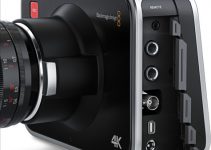With all the system-intensive tasks involved in video projects, it’s rather common to see video editors working with some of the most powerful computer workstations available out there. From top-tier processors and graphics card to expensive, yet convenient peripherals, there’s no doubt that a lot of time and money is put into building such a machine.
So, how does the ultimate video editing and color grading dream desk should eventually look like these days? Seasoned filmmaker Tom Antos raises the curtain and showcases the latest iteration of his personal video editing setup in the video below.
Of course, the heart of any editing workstation is the computer itself. In this particular case, the highlight specifications of Antos’ custom-built assembly include a 3.32GHz Intel Core i9 7900X 10 Core processor, 64GB of DDR HyperX Predator Memory, an NVIDIA GTX 1080 Gaming X Graphics Card with 8GB of VRAM, 4GB Seagate HDD, a 256GB M.2-based Intel SSD boot up drive, and a 400GB Intel 750 PCIe SSD.
When it comes to peripherals, Antos has a decent selection of accessories as well that allows him to speed up his workflow significantly and save a considerable amount of time along the line. For starters, he uses an RGB keyboard from NPET – minimalist in design, durable with its aluminum construction.
In addition to the keyboard, there are several control surfaces in use that complement the seamless editing experience. These include the Tangent Control Surface that’s perfect for fine adjustments when color grading and specifically when using the surface controls to tinker with the color wheels in DaVinci Resolve.
Meanwhile, as part of the suggested setup, we also find the Palette Control Surface that with its universal and customizable set of sliders, dials and buttons allow creative professionals to map different features inside the associated creative apps. This functionality is especially useful when it comes to editing inside of Premiere Pro CC, using the control surface as a means to access features quickly and efficiently.
Other input peripherals found in Antos’ workstation includes several USB hubs and card readers. More specifically, there’s the Kingwin SuperSpeed USB 3.1 Gen 1 Mini Combo Card Reader, which has M2, MS, SD, MMC, TF, and CF card slots alongside the Lexar CR1 Professional Workflow CFast 2.0 USB 3.0 Reader particularly utilized for dumping CFast media.
As his primary external drive, Tom Antos uses the LaCie 8TB 2big Dock 2-Bay RAID Array. With Thunderbolt 3 connectivity, LaCie drive offers impressive read and write speeds – in addition to acting as a hub with a USB 3.0 and SD card slot.
For data backups, large files, or for purely archival purposes, the setup relies on a Synology NAS Drive – DS1618+. Not only does this system have plenty of storage space to house all kinds of footage, but the DS1618+ is a NAS, meaning that it can be accessed from anywhere in the local network.
As a professional video editor, it’s paramount to evaluate your work on a monitor (or on monitors) that offers the utmost in terms of color accuracy. For final previews, video monitoring, and color grading, Antos opted for the BenQ SW271. Besides its astounding color accuracy, the monitor also comes with a dedicated control that allows him to toggle between inputs and color profiles.
For optimal results, however, the SW271 is connected to the workstation using a Blackmagic DeckLink Mini Monitor 4K Card, which essentially provides a signal to the monitor that bypasses any software calibration – whether it be from the operating system or some other third-party software.
Antos also has a second display below the SW271: the BenQ EX3501R. This is an ultra-wide monitor with a curved design and ample screen real estate which seems to be perfect for laying out the current project timeline and editing panes. Finally, there is a spare Aputure VS-2 field monitor to view the various histograms and vectorscopes necessary for color grading.
Even though filmmaking is primarily a visual medium, audio also plays an integral part in the creative process. That’s the main reason behind the inclusion of Behringer U-PHORIA UMC22 audio interface, acting as an input for the Sneal SCM-660 condenser microphone. The audio interface also provides an output to Antos’ studio monitors and the Audio-Technica ATH-M50x, his personal favorite monitoring headphones.
As impressive as Antos’ dream desk may be, remember that having the most powerful and kitted-out workstation is not the most important aspect of video editing. Even with a simple laptop, you can still produce great-looking and well-edited videos. However, if you are a professional that can afford to upgrade your existing workstation, Antos’ setup may give you a few insightful ideas on how you can take your video editing workflow to the next level.
[source: Tom Antos]
Disclaimer: As an Amazon Associate partner and participant in B&H and Adorama Affiliate programmes, we earn a small comission from each purchase made through the affiliate links listed above at no additional cost to you.



